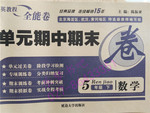题目内容
7. My uncle did a beautiful (水彩画) of a sunset while in Mexico.
7. watercolour

练习册系列答案
 智慧课堂密卷100分单元过关检测系列答案
智慧课堂密卷100分单元过关检测系列答案 单元期中期末卷系列答案
单元期中期末卷系列答案
相关题目
题目内容
7. My uncle did a beautiful (水彩画) of a sunset while in Mexico.
7. watercolour

 智慧课堂密卷100分单元过关检测系列答案
智慧课堂密卷100分单元过关检测系列答案 单元期中期末卷系列答案
单元期中期末卷系列答案